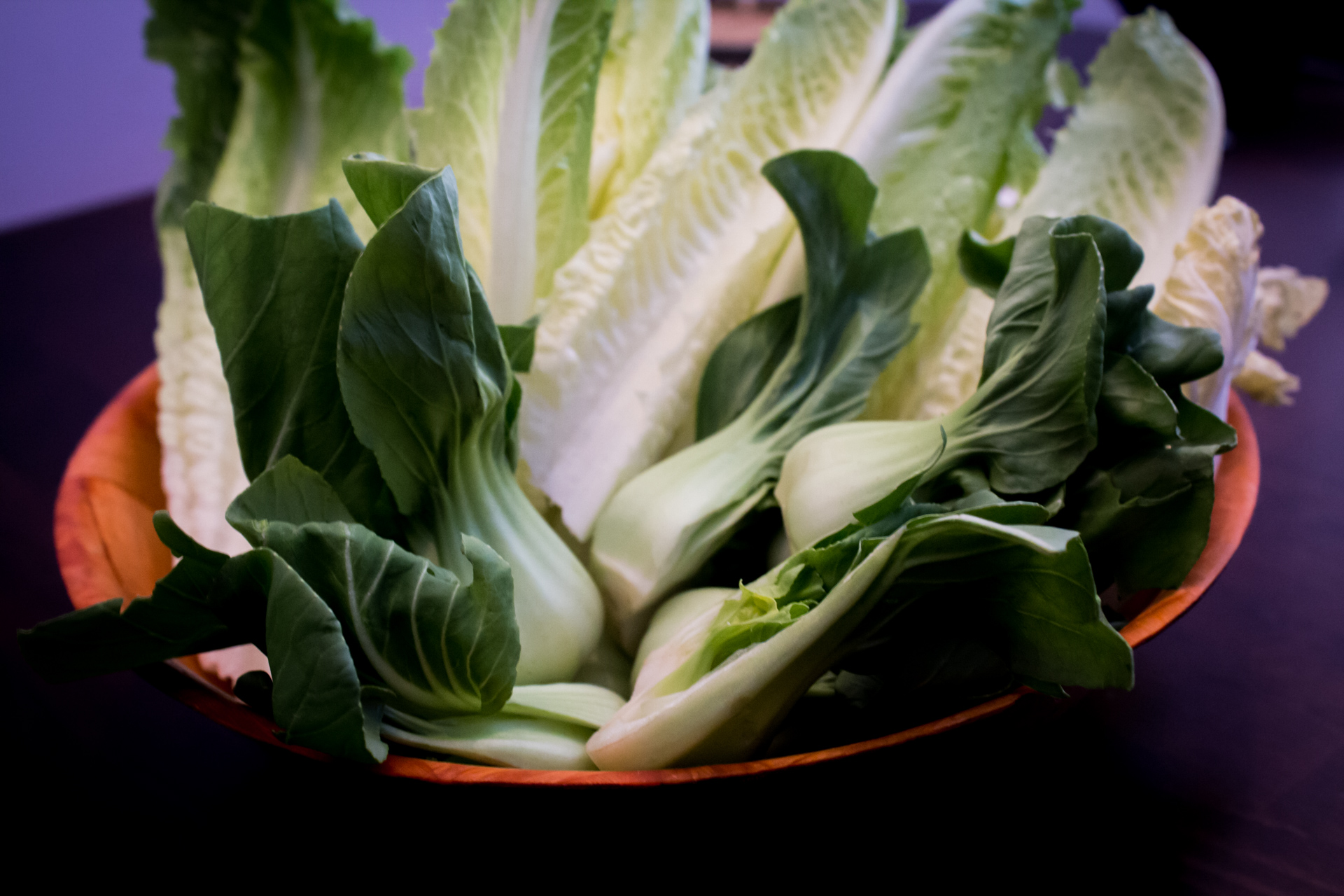By Sarah Levesque, Recent ASU Nutrition Student
We grow lots of cabbage and bok choy in Arizona during the winter. Here’s why it’s so healthy.
A staple in kimchi, and is used for soups or for the outer rolls for pork, chicken and seafood dishes, Chinese cabbage is a green leafy vegetable that is high in fiber, vitamins, and minerals. But Chinese cabbage is more than just a side at a Korean dinner, it’s a nutrient-dense vegetable that has many health benefits. Chinese cabbage has been studied for its ability to reduce inflammation and atherosclerosis.

Adding bok choy, another name for the Chinese cabbage, to your plate at home does more than add variety of nutrients, it also has a mild flavor. Although this leafy vegetable has been around for years, its health benefits and cancer-fighting properties are still being discovered today.
If the bold flavor and crispy texture aren’t enough to convince you to add it to your weekly menu, here’s a list of what bok choy has to offer otherwise. Competing against kale, bok choy is a nutrient-dense option to add a variety to your kitchen to help you mix it up and take a chance on a less popular green that deserves some attention.
Bok Choy contains:
Glutamine
It’s the same family of broccoli, Brussels sprouts, cauliflower, and kale. These are cruciferous vegetables that are rich in nutrients, minerals, and carotenoids. Cabbage is high in glutamine when it’s uncooked. Glutamine is the most common amino acid found in your muscles. Even though your body can make enough of this amino acid, after an intense workout or injury, your body might need more than it can produce. Instead of taking glutamine supplements after tough workouts, incorporating green leafy vegetables like Bok Choy is a healthier option that could save you money.
Vitamin A-RDA 2300 IU for Women, 3000 IU for men
Bok Choy is also high in vitamin A. Vitamin A helps with our vision in dim lighting and lower the risk of cataract and macular degeneration. It also helps keep our skin healthy and supports our body’s natural ability to fight against illness and infection. Just 100 g of fresh bok-choy is 149% of our daily-required amounts of vitamin A coming in with a whopping 4468 IU of vitamin A in just 100 g of uncooked bok choy.
Vitamin C- RDA 60 mg
Just 100 g of bok choy provides us with 75% of our daily requirements of vitamin-C, which supports our immune systems. This makes bok choy a great option to add to soups or broths when trying to fight off that cold since it acts as a shield against free radicals.
Vitamin K- RDA 122 µg-138 µg
This vitamin is being studied today for its potential role in strengthening our bones and delaying osteoporosis. Vitamin K is also known for its role in blood clotting and regulation of blood calcium. We can get 38% of our recommended daily allowance of Vitamin K in just 3.5 ounces or 100 g of uncooked bok choy.
Calcium– RDA 1000 mg
Bok choy offers a variety of minerals. It contains approximately 11% of our daily recommended allowance of calcium. Calcium helps keep our bones strong and control muscle and nerve function.
Magnesium- RDA 310-420 mg
Magnesium helps regulate reactions in the body from protein synthesis, muscle and nerve function, blood glucose control, and blood pressure regulation. It’s also important for muscle contraction, regulating your heart rhythm, and nerve impulse conduction. Just 100 g of bok choy serves up 5% of the recommended daily allowance.
Iron- RDA 11/15 mg
10% of our recommended daily allowance of iron can be obtained from just 100 g of bok choy. Women actually require a little more iron in their diet than men because of menstruation. Iron supports a healthy metabolism, is necessary for growth, development, cellular function, and synthesis of hormones and connective tissue.
Potassium- RDA 4700-5100 mg
For healthy muscle and nerve function, potassium is an important mineral. Potassium helps regulate fluid and electrolyte balance, heart function, nerve impulses, and contraction of skeletal and smooth muscle. With about half of what a banana offers, bok choy offers 5% of our RDA.
There’s a lot of studies being done on bok choy, and similar dark, leafy greens, to understand the full potential eating Chinese cabbage has on our health. Bok choy is inexpensive and is found in most stores next to the other greens.
Instead of cooking the cabbage, I decided to try it as a salad to preserve the flavor and the nutrients that the greens offer. As someone who eats mostly spinach and arugula, I loved having this green in place of the usual. It was an enjoyable way to mix things up a bit. It had a very robust and full flavor that paired well with the aromatic red bell pepper I added to the dish. The cucumbers tied together the bell peppers and bok choy well. I dressed it with just balsamic vinegar, salt and pepper, and olive oil.
The Fill Your Plate website has many amazing recipes, some of the recipes call for bok choy! Be sure to take a look at the recipes and other articles on the Fill Your Plate Blog!

